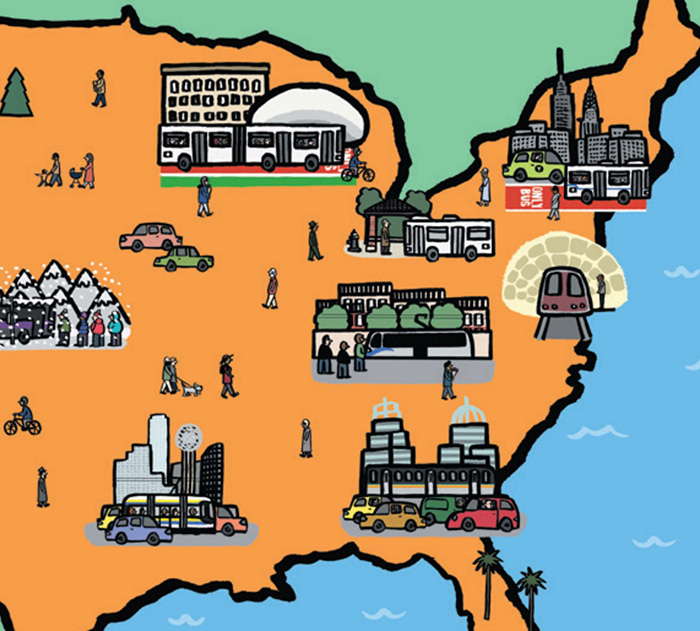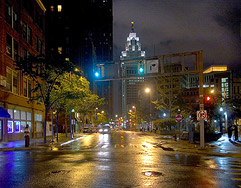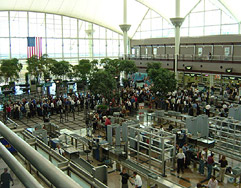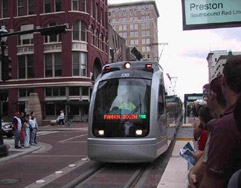TRANSITCENTER
Summary of Key Findings
How People Use Transit
 We find three common patterns of transit use: occasional riders who take transit once in a while, commuters who take transit regularly but only for work, and all-purpose riders who take transit regularly for multiple purposes.
We find three common patterns of transit use: occasional riders who take transit once in a while, commuters who take transit regularly but only for work, and all-purpose riders who take transit regularly for multiple purposes.
- There is significant demographic diversity within each group, and the proportion of each group varies greatly by city. Occasional riders are the largest group of riders in cities with poor transit. Greater transit access and quality leads to more all-purpose ridership.
- These categories prove far more illuminating in the real world of transit use than transit-industry dogma that divides people into “choice riders” and “captive riders.” The idea that people without cars are “captive” and will use transit regardless of quality is severely overstated. It often stands as an implicit excuse for poor service in denser neighborhoods that would use transit the most, lack of market orientation, and over-commitment of resources to chasing “choice” riders in low-density suburbs.
- The majority of transit riders typically walk to transit. An overwhelming share — 80 percent — of all-purpose riders do so. Just over half of commuters and occasional riders walk to transit.
- All-purpose ridership is stronger where it’s easy to walk to transit and where transit itself is frequent and provides access to many destinations.
What People Value in Transit
- The two most important factors driving satisfaction with transit are service frequency and travel time.
- Riders also value station and stop conditions, real-time information, and service reliability.
- Transit riders say the least important improvements are power outlets and Wi-Fi (out of a list of a dozen potential service improvements). Our findings call into question the fad among transit agencies touting free Wi-Fi for customers who don’t care strongly for it.
Transit Riders’ Use of Other Modes
- All-purpose riders are more likely than commuters and occasional riders to use non-car means of transportation when not using transit and are the most likely to use carsharing and bikesharing systems.
- Most commuters and occasional transit riders use personal cars when not using transit, but significant numbers of occasional riders use bicycles, taxis, and smartphone-based car services.
Introduction / Executive Summary
Useful transit is essential for cities to thrive. It supports development and economic growth while mitigating congestion, reduces the public health and environmental harms of transportation, and provides an affordable choice so that residents can access jobs and services without the expense of a private vehicle.
For these reasons, cities across America have been expanding and improving transit. From a ridership perspective, however, the results of these efforts have been mixed. A three-mile extension of Sound Transit light rail in Seattle increased the line’s ridership from 35,000 to 57,000 per day. Meanwhile, Atlanta’s new downtown streetcar (also three miles long) is drawing just a thousand riders a day, one-sixth of projected ridership.
When do people choose transit, and in what conditions? We answer these critical questions by examining how people use transit, using information gathered from a survey of 3,000 people who ride transit in 17 regions and through focus-group discussions with riders in three cities.
We begin with a user-centric approach: looking at how people actually use transit. We find three common patterns of transit use: occasional riders who take transit once in a while for specialized reasons, commuters who take transit regularly but only for work, and all-purpose riders who take transit regularly for multiple purposes. Occasional riders make up about half the sample, commuters one-seventh, and all-purpose riders a third. The proportion of each segment, however, varies greatly by city. Occasional riders are the largest group of riders in cities with poor transit. As transit access increases, all-purpose ridership grows.
This method of categorizing proves more illuminating than dividing people into “choice riders” and “captive riders,” as the transportation industry has done for a half-century. Longstanding dogma has been that people without cars are “captive” to transit and will use it regardless of service quality, while car owners have “choice” and must be won over through better service and luxe amenities. On the contrary, we find that the “captivity” of transit riders is severely overstated.
Using survey responses, we find that walkability is critical to transit. The majority of transit riders typically walk to transit –– and 80 percent of all-purpose riders walk to transit (compared to just over half of commuters and occasional riders).
Our survey finds that transit riders greatly value improvements in frequency and travel time, and these two factors appear to drive overall satisfaction with transit. Station and stop conditions, real-time information, and reliability are also highly valued.
Further support for these conclusions comes from the AllTransit database, a new spatial-analysis tool developed by the Center for Neighborhood Technology and TransitCenter. We show that all-purpose transit riders tend to live in neighborhoods with frequent transit that provides access to many destinations.
Growing Transit Ridership
Increases in all-purpose ridership are an important sign that transit is serving multiple needs, and the data suggest a clear policy framework for growing all-purpose transit ridership. Policymakers can grow all-purpose transit ridership by enabling more people to walk to useful transit. To expand transit ridership, policymakers should:
- Concentrate development around transit corridors, and make the walk to transit safe, easy, and pleasant.
- Concentrate transit improvements in walkable places with large numbers of residents and destinations.
- Pay special attention to increasing frequency and reducing transit travel time.
We would expect to see strong ridership in places that follow this formula and weaker ridership in places that don’t. For example, parkand-ride stations will draw mostly commuters and occasional transit users, while stations surrounded by walkable development will grow all-purpose ridership. Hourly buses in suburban areas will be used primarily as a “lifeline” service by those without alternatives. These lower-ridership services often accomplish legitimate goals; they can be justified as long as government is clear about their limitations.
The real problem comes when politicians and policymakers promise high ridership from transit that is designed in ways that won’t produce it. This often happens when they prioritize making transit “sexy” but not useful, or concentrate transit improvements in car-oriented suburbs while neglecting walkable city neighborhoods. Transit draws riders when it is located in walkable neighborhoods and designed to be frequent and fast, with proper shelters. Service that doesn’t meet this bar will fall short, regardless of whether the people it serves have personal cars and regardless of how attractively vehicles are designed. Conversely, service that meets this bar can draw ridership regardless of vehicle type.
Two years ago, when we published our 2014 Mobility Attitudes Survey (the first in our Who’s On Board series), transit ridership in America had reached levels not seen in nearly six decades. That survey confirmed important demographic and attitudinal trends in transit’s favor. We found that younger Americans and nonwhite Americans are more predisposed toward transit, as the country becomes more diverse and as Millennials take center stage in the workforce. We also found substantial unmet demand for living in mixed-use neighborhoods, which are better able to support transit and which make transit more useful.
In 2015, transit ridership dipped slightly, thanks in part to plunging gasoline prices. Even so, the demographic and attitudinal shifts we identified two years ago suggest that Americans are more open to transit than they have been in years past. But to take advantage of these shifts, transit decision makers must build useful transit. In this report, the second in our Who’s On Board series, we identify the conditions that make transit useful by listening, carefully, to the people who use it today.
Download full version (PDF): What Today’s Riders Teach Us About Transit That Works
About TransitCenter
transitcenter.org
“We spark innovations and support policies that improve public transportation for riders, businesses and communities. Better urban transit and increased ridership – along with housing affordability, good community design, equitable economic development, and other low-carbon modes of transportation such as walking and biking – are essential ingredients in urban vitality. Improving mobility for all will better the environment and public health through cleaner air and reduced carbon pollution, bolster the economy and increase access to jobs, and contribute to social equity and stronger mixed-use neighborhoods.”
Tags: Pedestrian, safety, survey, TransitCenter, Walkability, Walking






 RSS Feed
RSS Feed